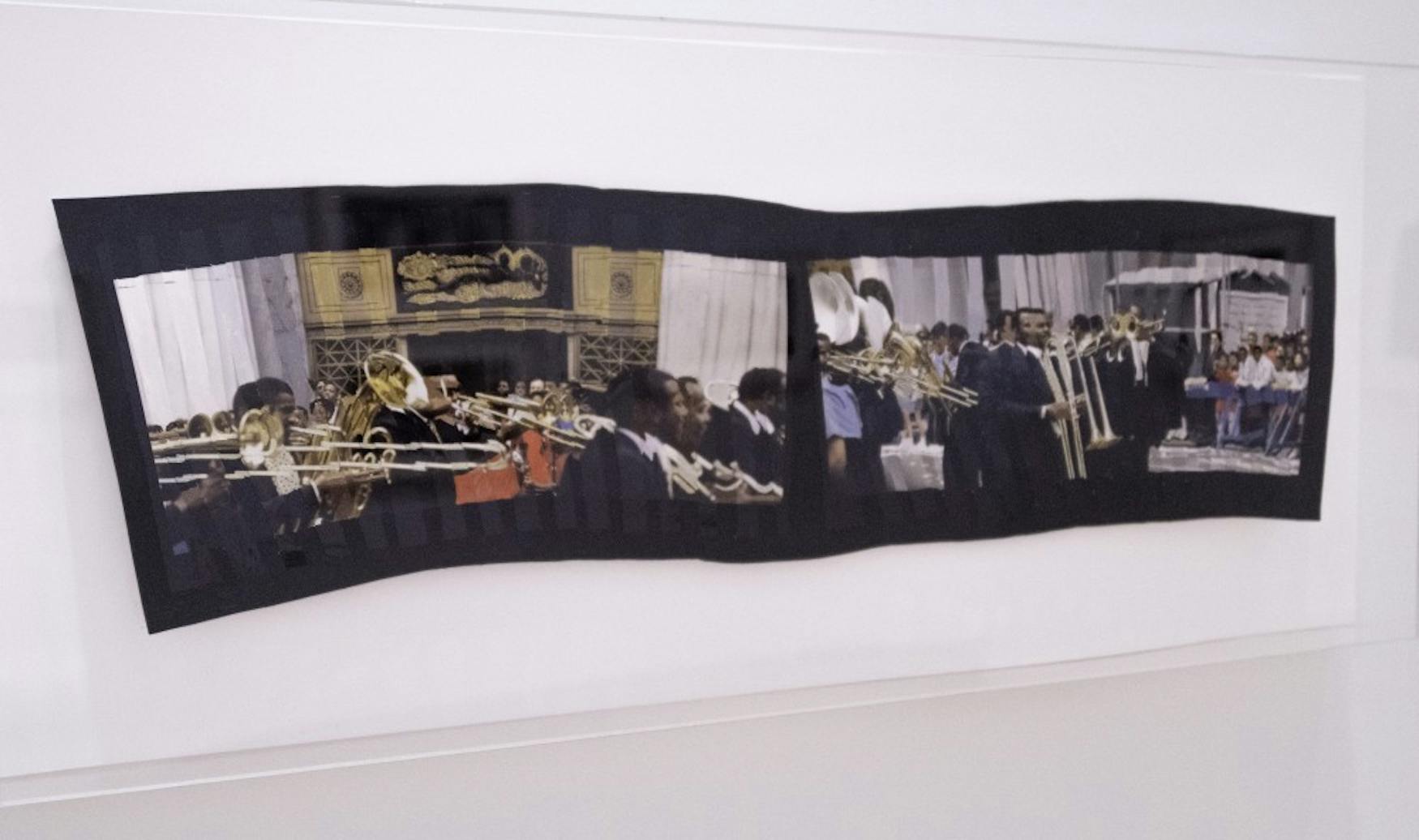JustArts Spotlight on The Rose
Howardena Pindell’s “Nelson Mandela Parade” is a striking piece which conveys Pindell’s memory loss, the result of a car accident, extremely vividly. Through it, viewers understand how she sees the world — she experiences her life in fractured pieces. She created this work by taking photos of a parade celebrating Nelson Mandela in 1990 and cutting out stripes. Then, she aimed to fill the negative space that was left completely by memory.
The work is dynamic, clearly forcing the audience to look through her perspective. Pindell challenged herself by cutting the stripes with bent shapes. Viewers can tell that she is really pushing herself out of her comfort zone, confronting her affliction head-on. This task she is allowing us to observe makes the experience all the more intimate and personal. You form a connection with her the more you look at her art.
Most of Pindell’s work on display in the Rose Art Museum doesn’t really affect me, but her creativity and inspired vision for “Nelson Mandela Parade” stuck out. This work combined abstract and figurative art, in that what we are observing is an interpretation of a real event that she recalls in fragments. When I came across the work, I stared at it for longer than I care to admit. I was caught in the detail — or in this case lack thereof — of the inserted painting.
If you give a stranger a quick glance, you pay no mind to the details of their face. This exposure to the outside world and how we remember it is deftly woven into the purpose of the work. The intentional reliance on her memory made for a risky endeavor, yet she was still able to create dimensionality with the pictures. It combines the detail of a photograph and the personal expression of a painting. I admire her attempt at this piece. When walking through the Rose Art Gallery, this stuck out to me and ended up being one of my favorites.



Please note All comments are eligible for publication in The Justice.